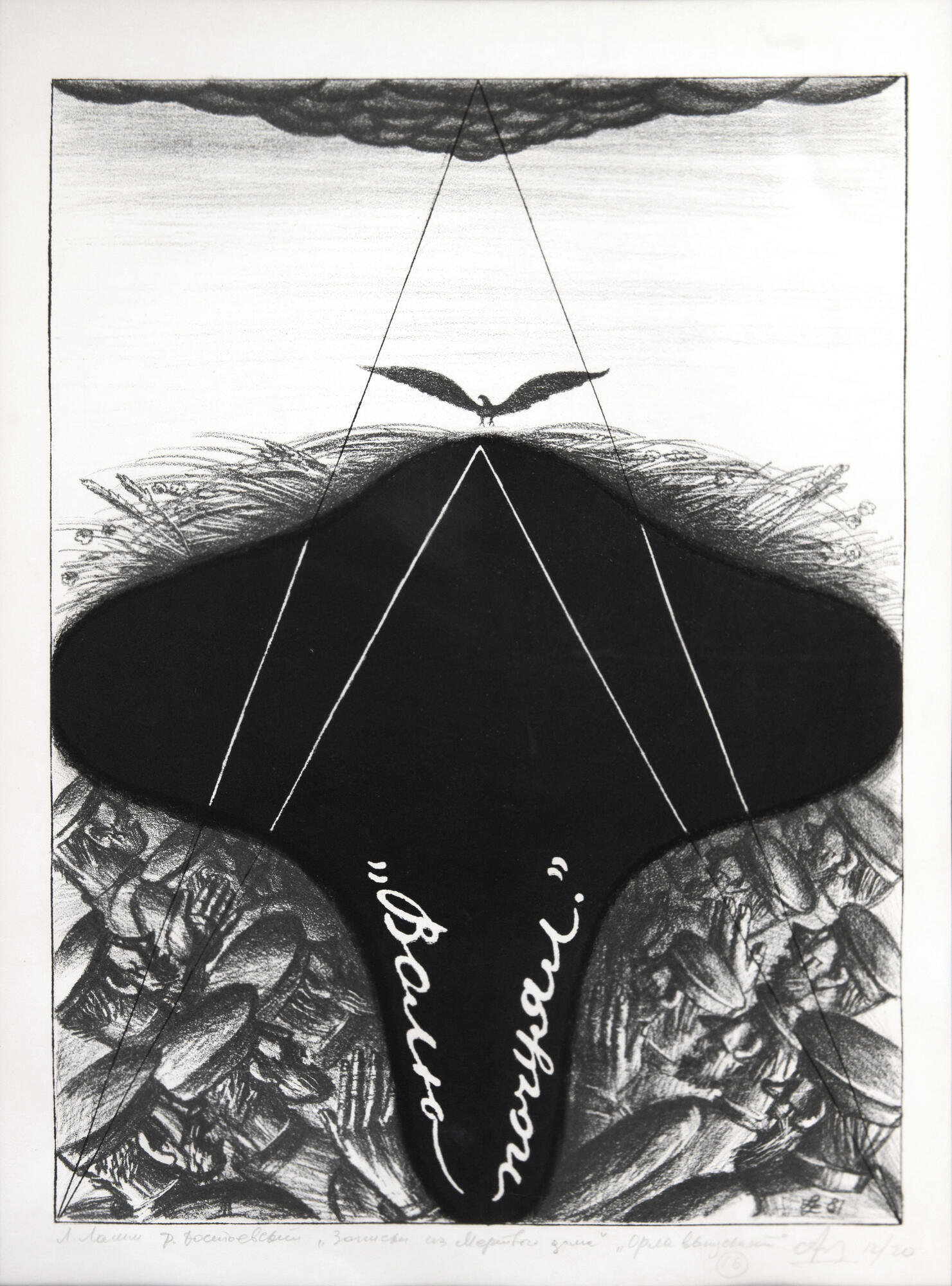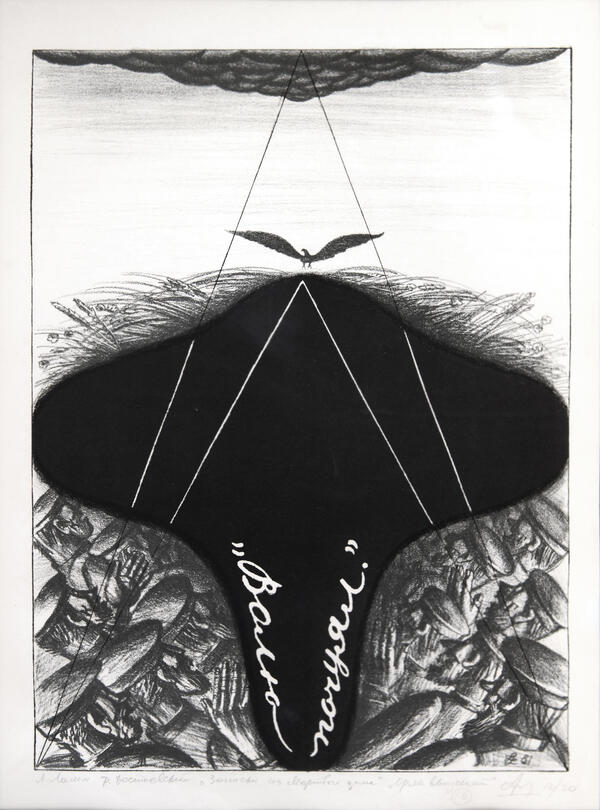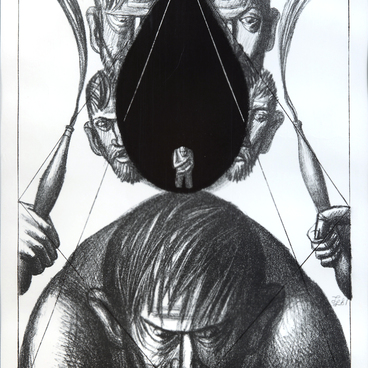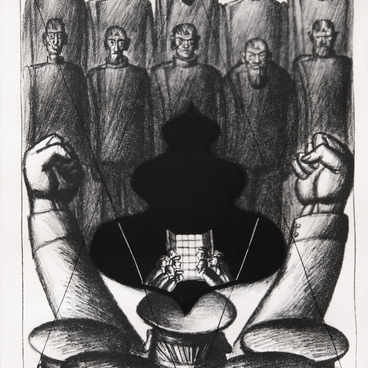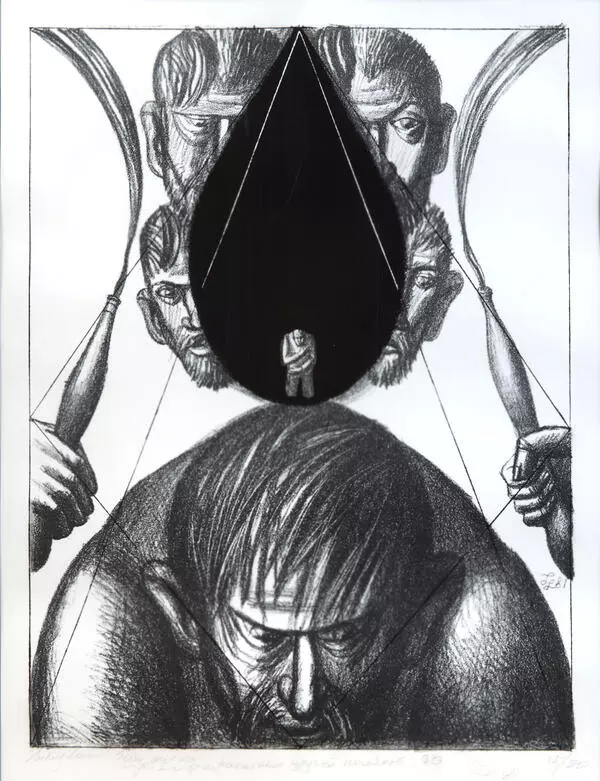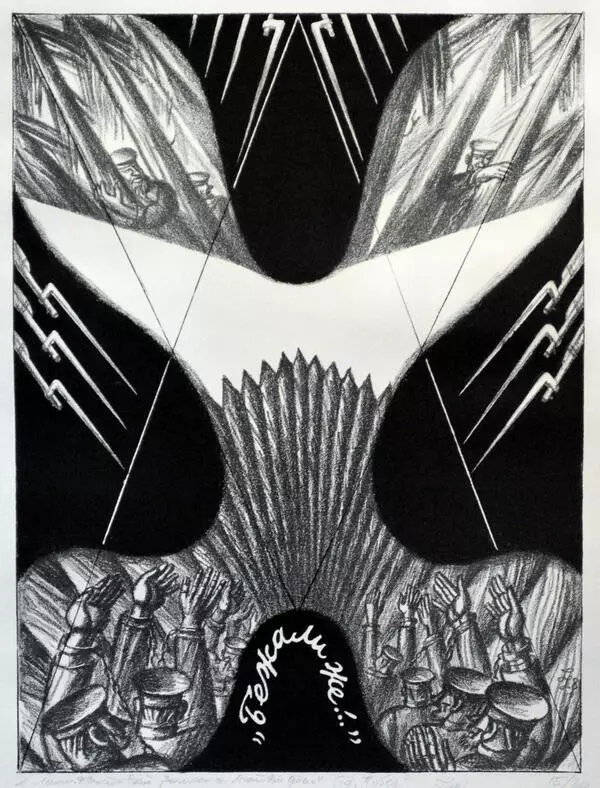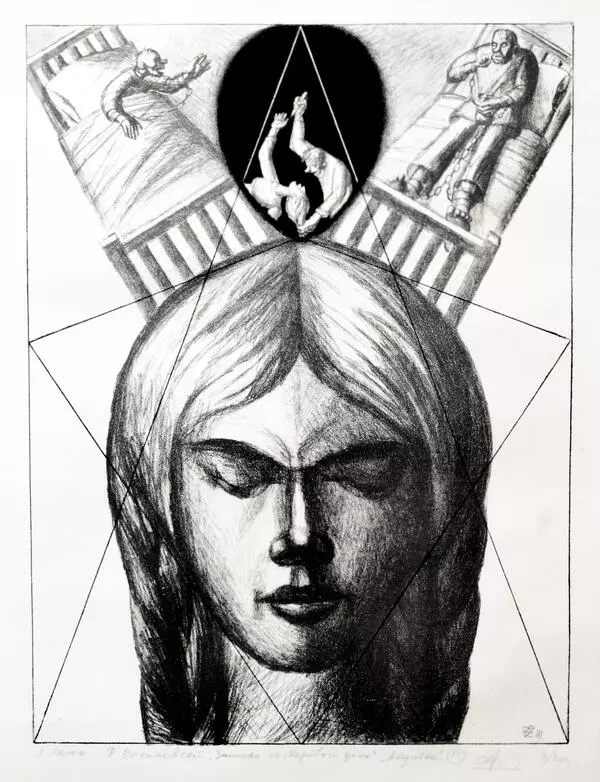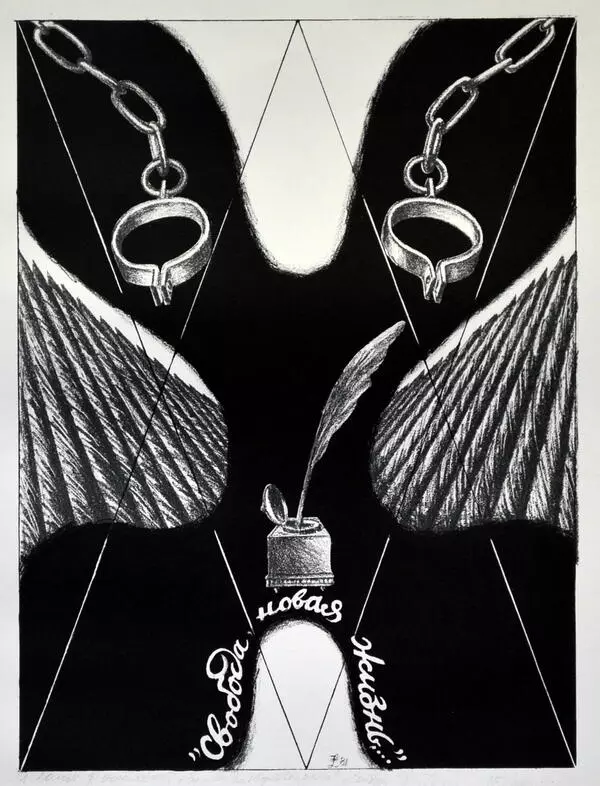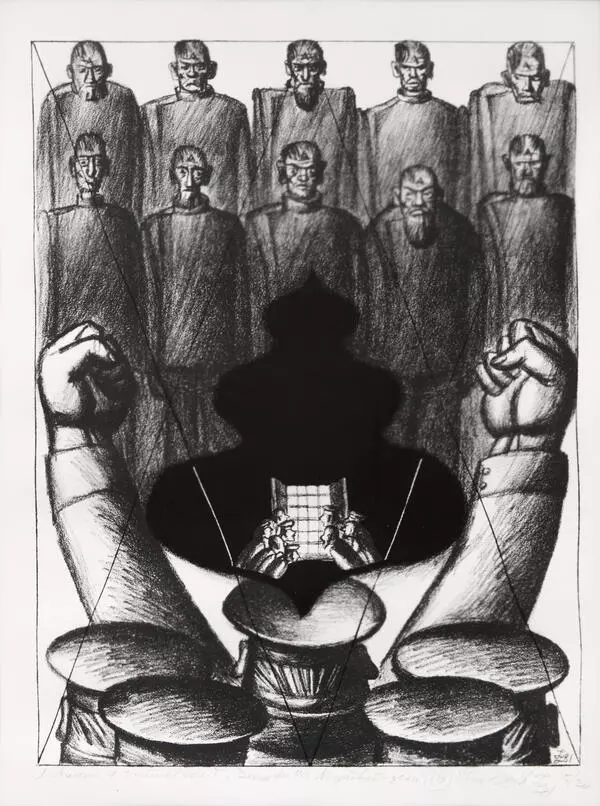Illustration ‘Setting the Eagle Free’ for FyOdor DostoEvsky’s Memoirs from the House of the Dead was created in Moscow in 1981 among other illustrations for Dostoevsky’s piece. The novel chronicles the conditions of prison life in Siberia in the second half of the 19th century. This work by the writer was an artistical reinterpretation of all that he had witnessed and gone through over his four-year Omsk exile (from 1850 to 1854) with regard to the case of the PetrashEvsky Circle. Dostoevsky wrote the novel between 1860 and 1862. The first chapters were published in the VrEmya (Time) magazine.
‘Setting the Eagle Free’ portrays a bird soaring over the black field. The lower part of the field fragment is signed ‘He feels it. It’s freedom! ’ Left and right of the sign, are prisoners. According to the plot, an eagle (Karakus) dwelled in the prison for some time. It was wounded and couldn’t fly. After three months, the prisoners decided to let the eagle out. ‘Let him die, but let him die a free bird, ’ they said.
This is how the episode is depicted in the novel. ‘One afternoon, when the drum beat for beginning work, they took the eagle, tied his beak (for he struck a desperate attitude), and took him out of the prison on to the ramparts. The twelve convicts of the gang were extremely anxious to know where he would go to. It was a strange thing: they all seemed as happy as though they had themselves got their freedom. “Oh, the wretched brute. One wants to do him a kindness, and he tears your hand for you by way of thanks, ” said the man who held him, looking almost lovingly at the spiteful bird. “Let him fly off, Mikitka!” “It doesn”t suit him being a prisoner; give him his freedom, his jolly freedom.” They threw him from the ramparts on to the steppe. It was just at the end of autumn, a gray, cold day. The wind whistled on the bare steppe and went groaning through the yellow dried-up grass. The eagle made off directly, flapping his wounded wing, as if in a hurry to quit us and get himself a shelter from our piercing eyes. The convicts watched him intently as he went along with his head just above the grass. “Do you see him, hey? ” said one very pensively. “He doesn”t look round, ” said another; “he hasn”t looked behind once.” “Did you happen to fancy he”d come back to thank us? ” said a third. “Sure enough, he”s free; he feels it. It”s freedom! ” “Yes, freedom.” “You won”t see him any more, pals.” “What are you about sticking there? March, march! ” cried the escort, and all went slowly to their work”.
